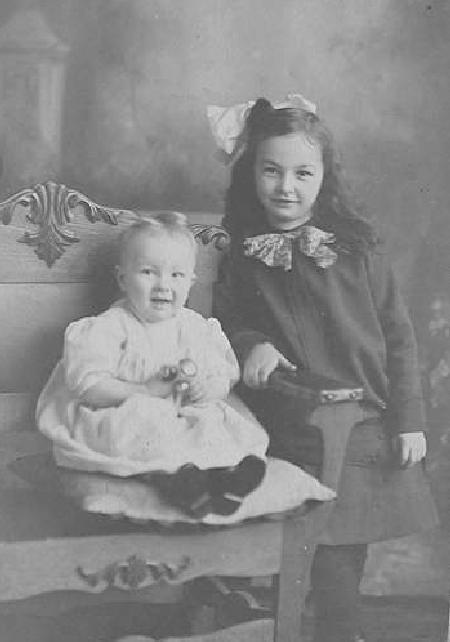
Girls Smocks

Figure 1.--This French child wears a dark smock. It looks, however, that it is font buttoning which may suggest a boy. Also the ollar bow looks rather boyish. The hair and hair bow suggest a girl, but as we have discussed in HBC boys mihght also have both long hair and hair bows. Long uncurled hair was not uncommon for French boys from affluent families at the time. The plain smock may signal a boy. A girl may likely would have had a fancier garment, especially for a portrait. But it is quite difficult to tell from this image. Also we are not sure that this is not a boy dress rather than a smock. We are not sur about the date, but would guess about 1905.
|
Smocks were worn by boys and girls. Some boys and girls wore identical styles of smocks. During the 19th century I am not sure that there were specific smock styles or boys and girls. After World War I we begin to note specialized styles for boys and girls. Some styles could be worn by both, but specialized styles become more common. This was more common in countries like France where smocks were more commonly worn. One of the important indicators is a bow in the back. We do not believe that this was importat in the 19th century, but did become important in Europe after World War I. Belts are another factor. Belts were more common for boys, but some girls may have worn them as well. Here weare not yet sure. Many available images are front portraits. As color, patterned material, and detiling are also factors which can be used in gender specialization, some images can be identified in fontal shots. Another factor is buttoning. Girls were more likelt towear back buttoning smocks like dresses. But boys have also worn bck buttoning smocks, although there are significant chronological differences. We are not sure at this time how to interpret these images, especially 19th century images. Analysis is further complicated by country differences. Because we focus primarily on boys' clothing, we have not addressed girls' styles in detail. Yet this is of some importance so that we can attempt to determine gender in unidentified images. A HBC reader writesabout the image here, "I can not put my finger on it but it seems to be a boy to me. I think the collar bow, the plainness of the garment, and the face suggest a boy to me. The long uncurled hair with a bow is not uncommon for France at this time."
HBC

Navigate the Boys' Historical Clothing Smock-related pages:
[Return to the Main smock page]
[Pinafores]
[Fauntleroy suits]
[Fauntleroy dresses]
[Sailor hats]
[Park outings]
[French page]
[Renoir page]
[School smocks]
Navigate the Boys' Historical Clothing Web Site:
[Introduction]
[Activities]
[Biographies]
[Chronology]
[Clothing styles]
[Countries]
[Bibliographies]
[Contributions]
[FAQs]
[Glossaries]
[Satellite sites]
[Tools]
[Boys' Clothing Home]
Created: February 10, 2003
Last updated: February 10, 2003



